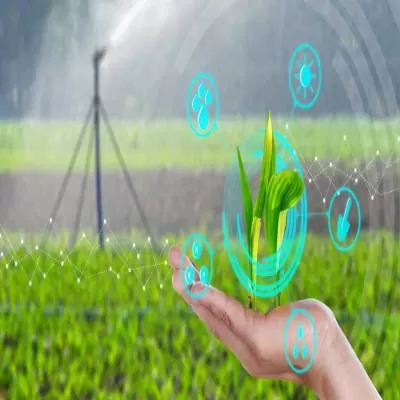- Home
- Technology
- Marketable Innovation
Marketable Innovation
There are challenging times ahead with India´s GDP growth for FY2013-14 being projected at a dismal 4 per cent and the fiscal deficit, CAD and consumer price inflation continuing to remain at precariously high levels.
The Indian manufacturing sector has weakened considerably showing signs of irreparable fatigue. Not so long ago, soon after the Lehman crisis, India was basking in the glory of an 8 per cent GDP growth for FY2009-10 and FY2010-11.
In an increasingly connected world, global events have and will continue to play some role in India´s growth story. The 'resilient' Indian nature will tide over any crisis but the important questions to ask here is: Why do we always have to arrive at a crisis situation to get our act together? Why can't we build from a position of strength like the one we had in 2009-10 and to some extent in 2010-11? We cannot hide behind global economic woes and continue to overlook opportunities and procrastinate from reforming our fast crumbling structural framework.
Invention vs innovation: The business dictionary website definition of innovation highlights two very fundamental aspects: the ´go to market (commercialisation)´ and the ´competitive cost´ aspects. ´Invention´ and ´innovationare´ are very different from each other. The former is the creation of something new while the latter is getting further ahead because of it. Innovation focuses on creating value at a price that customers are willing to pay, while an invention´s objective is to create something new without necessarily focusing on the cost aspect. On a broader scale, inn-ovation brings inventions into broader commercial usage through creative thinking, investment, and marketing. Having said that, simply put, ´invention´ is typically needed to stimulate ´innovative´ activity.
Frugal innovations: Invention requires a lot more experimentation, time and resources than required by innovation. It is highly debatable if a country like India can prosper using either an invention-led model or an innovation-led model to jumpstart its journey to becoming a rich nation. For example, post the Second World War, Japan chose innovation and grew by adapting the American manufacturing, 'improving' the adopted technologies and techniques, raising quality and lowering costs. Similarly, an innovation led model was adopted by South Korea to lift itself from a poor country to a rich one. China adopted the Innovative model about 20-25 years ago and is reaping its benefits. Over the last 15 years, India has adopted the innovation model more successfully for the IT sector using advanced computing and communications technologies to perform software development, tele-services, etc, all at a fraction of labour costs as compared to the US or Western Europe. India must replicate the success it has achieved in the IT services by choosing innovation for manufacturing and other services as well. It is interesting to note India´s take on frugal innovation or what is mostly known as jugaad, as it seems to have emerged as one of its unique strengths. The way India positions itself within the global innovation community and the strategies it has adopted for collaboration and engagement with other developed and developing countries is crucial. Its frugal innovation system involves making better things, not just at a cheaper cost but something that will extend the life of products and services. In a sense, it is similar to the Japan innovation model of the 1960s. Jaipur Foot is one example of frugal innovation, which not only reduce the cost of prosthetic limbs significantly, but also improves its functionality and cultural adaptability. Its design has been revolutionary and has influenced the market for prosthetics world over. Another example has been Bharti Airtel´s approach to cutting the cost of mobile phone calls without reducing the quality of service.
Innovation-culture mix: The Indian frugal innovation system has all the ingredients to harness the latent creative potential of our aspiring population; promote and diffuse indigenous grassroot skill sets; and help the informal sector to better absorb existing knowledge. These challenging times require the Indian government to collaborate with the corporate sector to ensure appropriate infrastructure and governance systems along with requisite tax and other incentives to harness and further promote the Indian frugal innovation system and put India back on its path to inclusive growth.It would be a real pity and a great disservice to our future generations if our decision-makers are not able to leverage on our current demographic dividend and the latent creative mindset of our populace to make India a rich nation.
About the author:
Vinod Wadhwani is the Director of Ambit Corporate Finance. He has over 10 years of relevant experience in investment banking and corporate finance and advisory services.
VINOD WADHWANI brings forth the marked difference between invention and innovation. There are challenging times ahead with India´s GDP growth for FY2013-14 being projected at a dismal 4 per cent and the fiscal deficit, CAD and consumer price inflation continuing to remain at precariously high levels. The Indian manufacturing sector has weakened considerably showing signs of irreparable fatigue. Not so long ago, soon after the Lehman crisis, India was basking in the glory of an 8 per cent GDP growth for FY2009-10 and FY2010-11. In an increasingly connected world, global events have and will continue to play some role in India´s growth story. The 'resilient' Indian nature will tide over any crisis but the important questions to ask here is: Why do we always have to arrive at a crisis situation to get our act together? Why can't we build from a position of strength like the one we had in 2009-10 and to some extent in 2010-11? We cannot hide behind global economic woes and continue to overlook opportunities and procrastinate from reforming our fast crumbling structural framework. Invention vs innovation: The business dictionary website definition of innovation highlights two very fundamental aspects: the ´go to market (commercialisation)´ and the ´competitive cost´ aspects. ´Invention´ and ´innovationare´ are very different from each other. The former is the creation of something new while the latter is getting further ahead because of it. Innovation focuses on creating value at a price that customers are willing to pay, while an invention´s objective is to create something new without necessarily focusing on the cost aspect. On a broader scale, inn-ovation brings inventions into broader commercial usage through creative thinking, investment, and marketing. Having said that, simply put, ´invention´ is typically needed to stimulate ´innovative´ activity. Frugal innovations: Invention requires a lot more experimentation, time and resources than required by innovation. It is highly debatable if a country like India can prosper using either an invention-led model or an innovation-led model to jumpstart its journey to becoming a rich nation. For example, post the Second World War, Japan chose innovation and grew by adapting the American manufacturing, 'improving' the adopted technologies and techniques, raising quality and lowering costs. Similarly, an innovation led model was adopted by South Korea to lift itself from a poor country to a rich one. China adopted the Innovative model about 20-25 years ago and is reaping its benefits. Over the last 15 years, India has adopted the innovation model more successfully for the IT sector using advanced computing and communications technologies to perform software development, tele-services, etc, all at a fraction of labour costs as compared to the US or Western Europe. India must replicate the success it has achieved in the IT services by choosing innovation for manufacturing and other services as well. It is interesting to note India´s take on frugal innovation or what is mostly known as jugaad, as it seems to have emerged as one of its unique strengths. The way India positions itself within the global innovation community and the strategies it has adopted for collaboration and engagement with other developed and developing countries is crucial. Its frugal innovation system involves making better things, not just at a cheaper cost but something that will extend the life of products and services. In a sense, it is similar to the Japan innovation model of the 1960s. Jaipur Foot is one example of frugal innovation, which not only reduce the cost of prosthetic limbs significantly, but also improves its functionality and cultural adaptability. Its design has been revolutionary and has influenced the market for prosthetics world over. Another example has been Bharti Airtel´s approach to cutting the cost of mobile phone calls without reducing the quality of service. Innovation-culture mix: The Indian frugal innovation system has all the ingredients to harness the latent creative potential of our aspiring population; promote and diffuse indigenous grassroot skill sets; and help the informal sector to better absorb existing knowledge. These challenging times require the Indian government to collaborate with the corporate sector to ensure appropriate infrastructure and governance systems along with requisite tax and other incentives to harness and further promote the Indian frugal innovation system and put India back on its path to inclusive growth.It would be a real pity and a great disservice to our future generations if our decision-makers are not able to leverage on our current demographic dividend and the latent creative mindset of our populace to make India a rich nation. About the author: Vinod Wadhwani is the Director of Ambit Corporate Finance. He has over 10 years of relevant experience in investment banking and corporate finance and advisory services.























